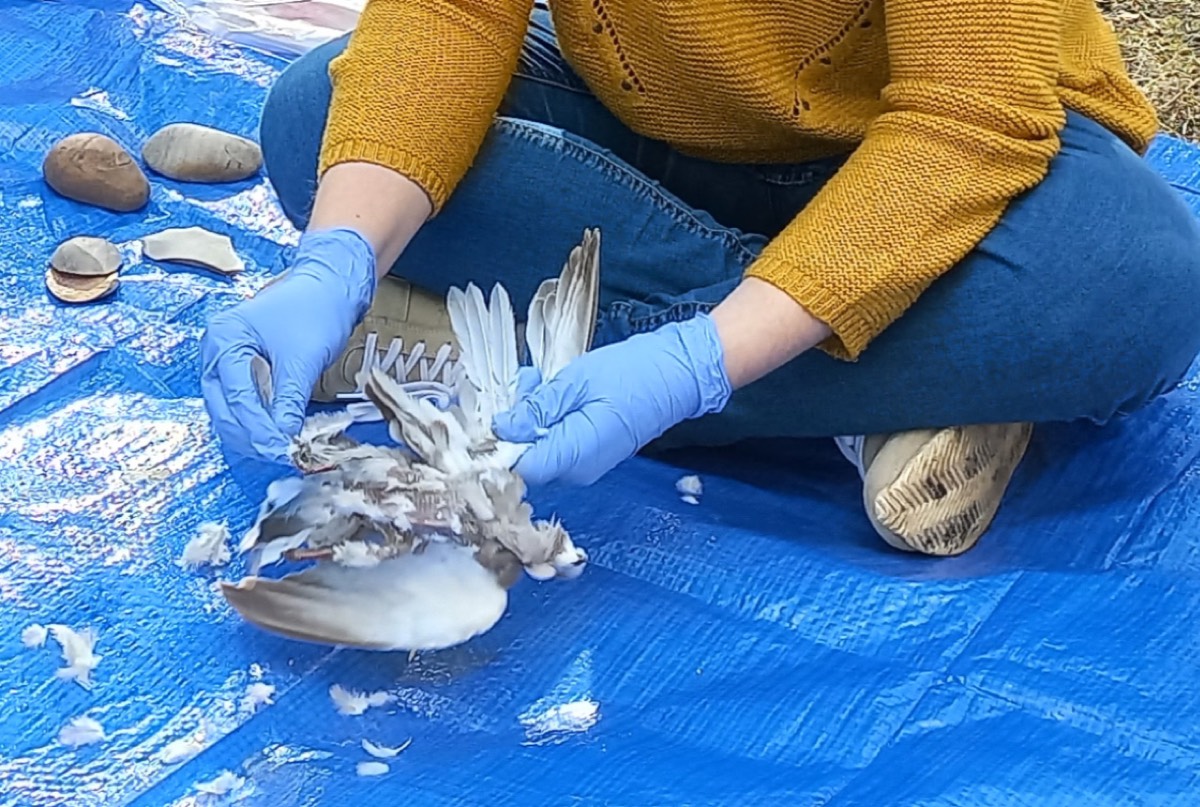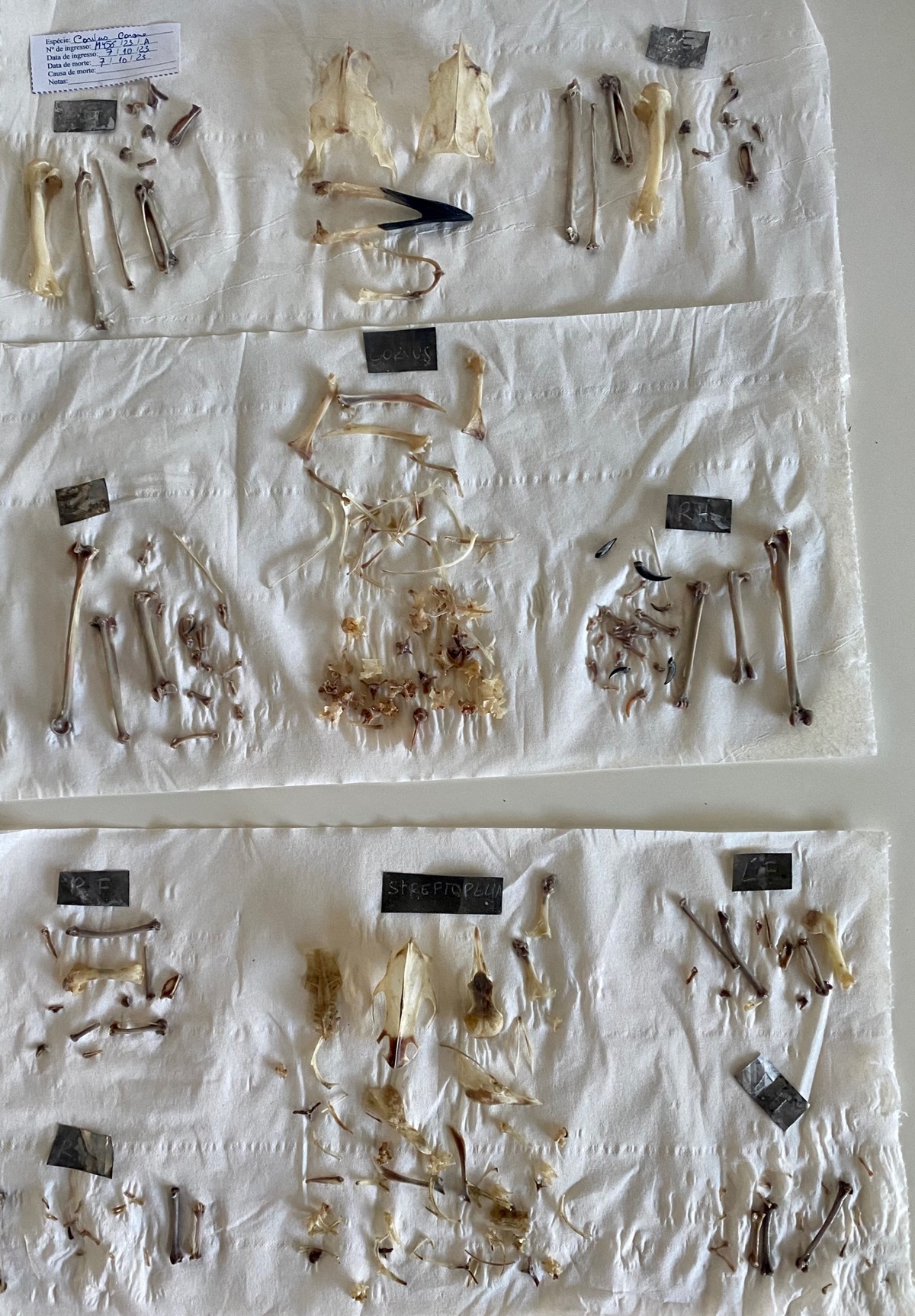
Archaeologists seeking to learn more about how Neanderthals prepared and cooked their food conducted a series of hands-on experiments with small fowl using flint flakes for butchering. They found that the flint flakes were surprisingly effective for butchering the birds, according to their new paper published in the journal Frontiers in Environmental Archaeology. They also concluded that roasting the birds damages the bones to such an extent that it's unlikely they would be preserved in the archaeological record.
According to the authors, Neanderthals were able to thrive for over 200,000 years across a broad range of geographical regions so naturally archaeologists are interested in how they sustained themselves. There has been research into their killing and hunting of large game. Neanderthals were expert hunters known to kill bears and other carnivores. A pair of lion fibula from the Middle Paleolithic found in eastern Iberia with cut marks indicates the lion was butchered, while other lion bones found in Southwestern France from the same period had cut marks indicative of skinning.
And as we reported just last year, researchers found evidence of what might be the earliest example of lion hunting yet known, based on on a close forensic analysis of a cave lion skeleton showing evidence of injury by a wooden spear some 48,000 years ago.
The team tested their hypothesis by reconstructing the ballistics of a wooden-tipped spear's impact on the rib, matching the direction, impact angle, and depth of penetration. Judging by those aspects, it looks like the spear went through the left side of the cave lion's abdomen and passed through vital organs before hitting the right side of the rib. That same study also found cave lion claw bones showing evidence of having been skinned around 190,000 years ago.
However, smaller game like birds has received much less attention. Yet "birds offer a complementary dietary resource that may have played an essential role in Neanderthal adaptation and survival," co-author Mariana Nabais of the Institut Catala de Paleoecologia Humana i Evolucio Social in Spain and her colleagues wrote. So, they designed a pilot study simulating early human cooking and butchering methods to provide a baseline, compiling a database of telltale marks that could help archeologists better analyze artifacts by comparing marks on those to the database.
Birdies roasting on an open fire
Nabais et al. collected frozen bird specimens that had died under natural conditions from a wildlife reserve in Portugal, selecting species that would taxonomically represent those Neanderthals likely would have hunted in the Iberian Peninsula: carrion crow, wood pigeon, and the Eurasian collared dove. All five specimens were de-feathered.
Two were butchered uncooked, using a replica flint flake (made by students) when necessary; the techniques used were drawn from archeological evidence and ethnographic data. The scientists then cleaned and dried the bones, examining them under a microscope to look for signature cut marks, breaks, and burns. They also analyzed the flint flake for telltale wear and tear and found small scarring on the edge in a half-moon shape.
“Using a flint flake for butchering required significant precision and effort, which we had not fully valued before this experiment,” said Nabais. “The flakes were sharper than we initially thought, requiring careful handling to make precise cuts without injuring our own fingers. These hands-on experiments emphasized the practical challenges involved in Neanderthal food processing and cooking, providing a tangible connection to their daily life and survival strategies.”
The other three birds were roasted whole (unbutchered) on hot coals at 500° C : first on their bellies for four minutes, then turned over and roasted for another three minutes. The team was careful to maintain a consistent temperature and monitor the cooking duration so that they didn't overcook the meat. “Maybe because we de-feathered the birds before cooking, the roasting process was much quicker than we anticipated," said Nabais. "In fact, we spent more time preparing the coals than on the actual cooking, which took less than ten minutes.”
The team also analyzed the bones of the cooked birds. In the former case, Those bones were much more brittle—some shattered—and almost all had black or brown burns, as well as black stains inside the inner cavities of some of the bones. "As burnt bird bones are prone to breakage and loss, roasting activities may therefore go undetected in archaeological sites," the authors wrote. "Such observations suggest that cooking methods significantly affect the preservation of skeletal remains in archaeological contexts, potentially influencing the archaeological visibility of certain cooking practices."
Nabasi et al. emphasized that this is just a pilot study with a very small sample size and limited species; the kinds of birds consumed by Neanderthals may have been more diverse. And despite their careful control of the experimental conditions, it is simply not possible to replicate Neanderthal methods, real-world conditions, and broader cultural contexts exactly. They called for further research, expanding the experiments to more bird species and different cooking methods.
Frontiers in Environmental Archaeology, 2024. DOI: 10.3389/fearc.2024.1411853 (About DOIs).


3175x175(CURRENT).thumb.jpg.b05acc060982b36f5891ba728e6d953c.jpg)


Recommended Comments
There are no comments to display.
Join the conversation
You can post now and register later. If you have an account, sign in now to post with your account.
Note: Your post will require moderator approval before it will be visible.